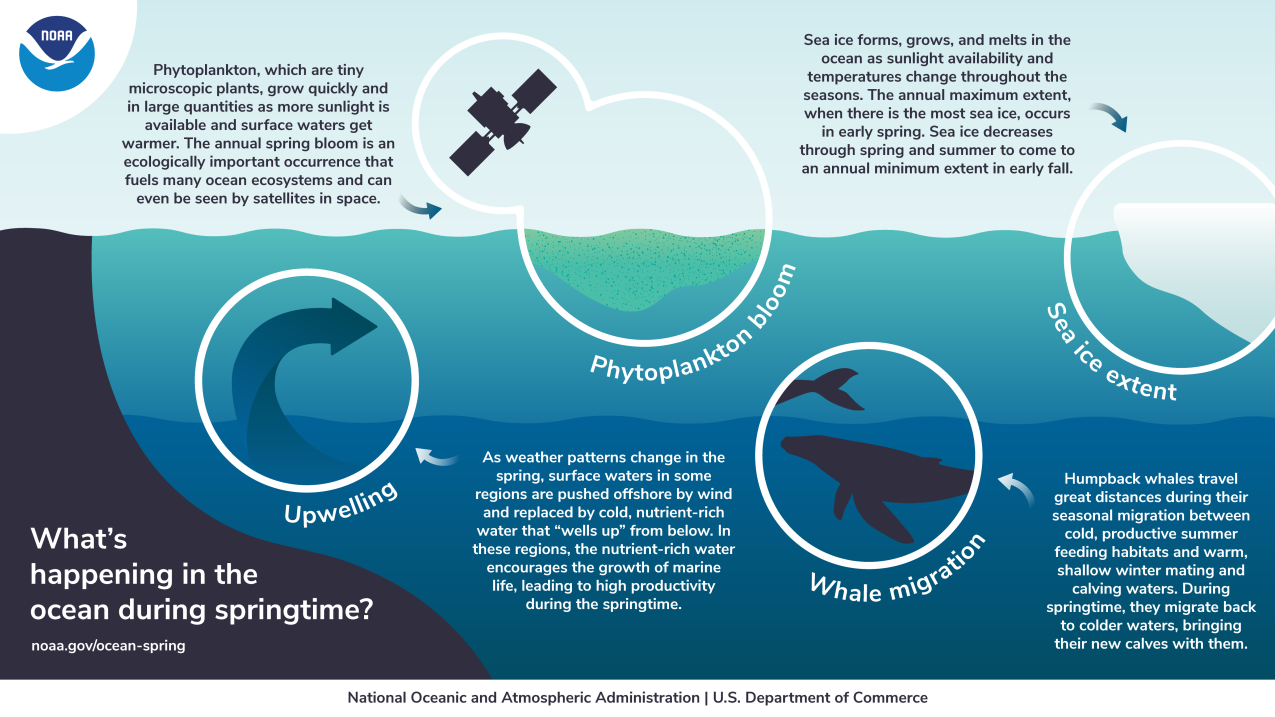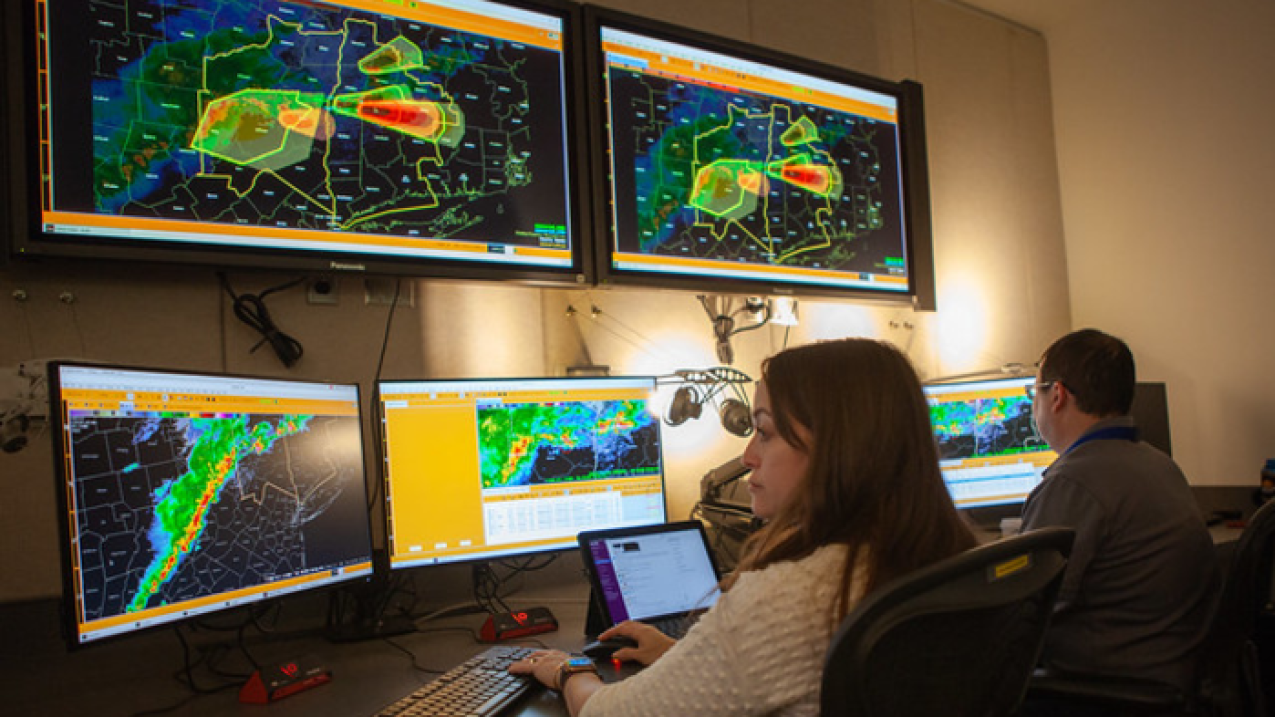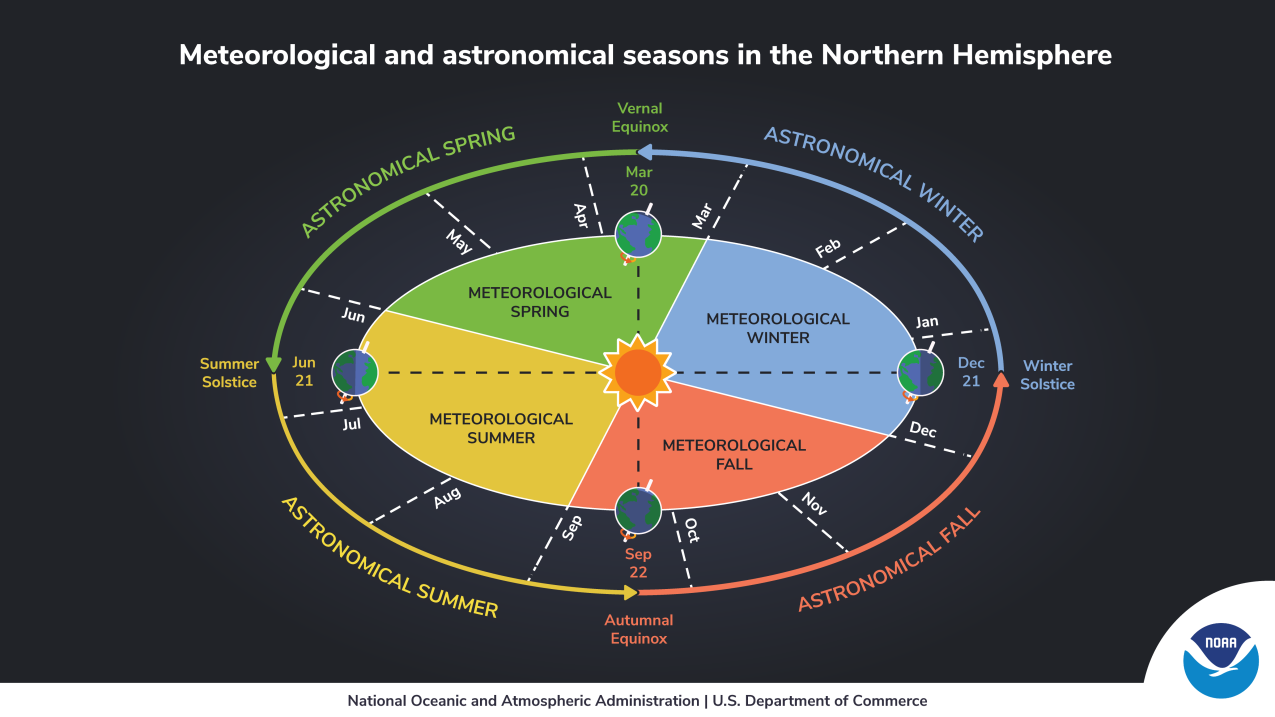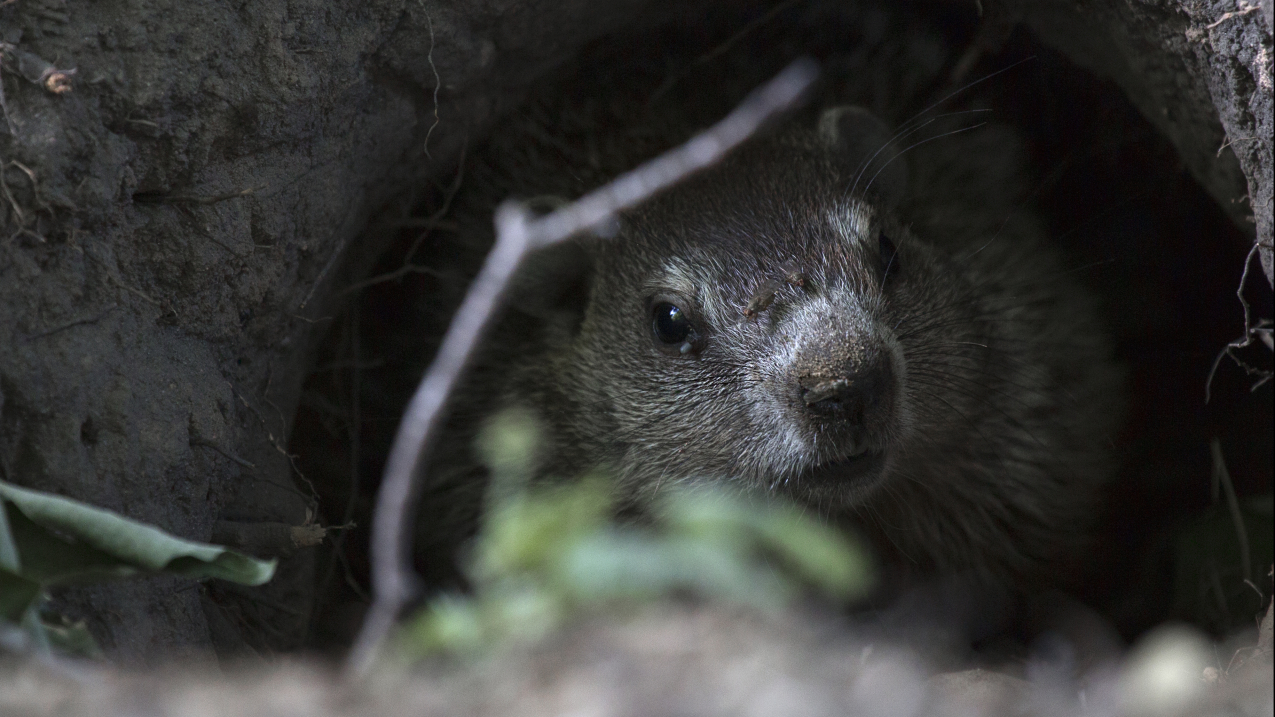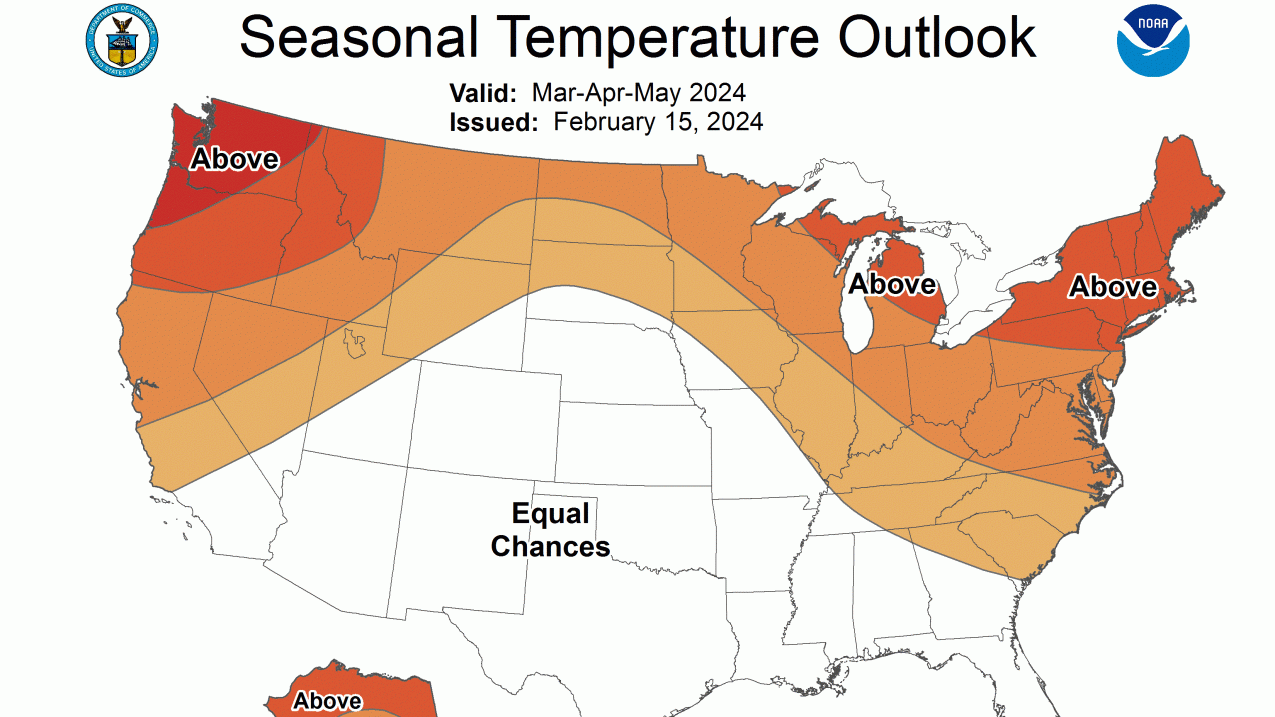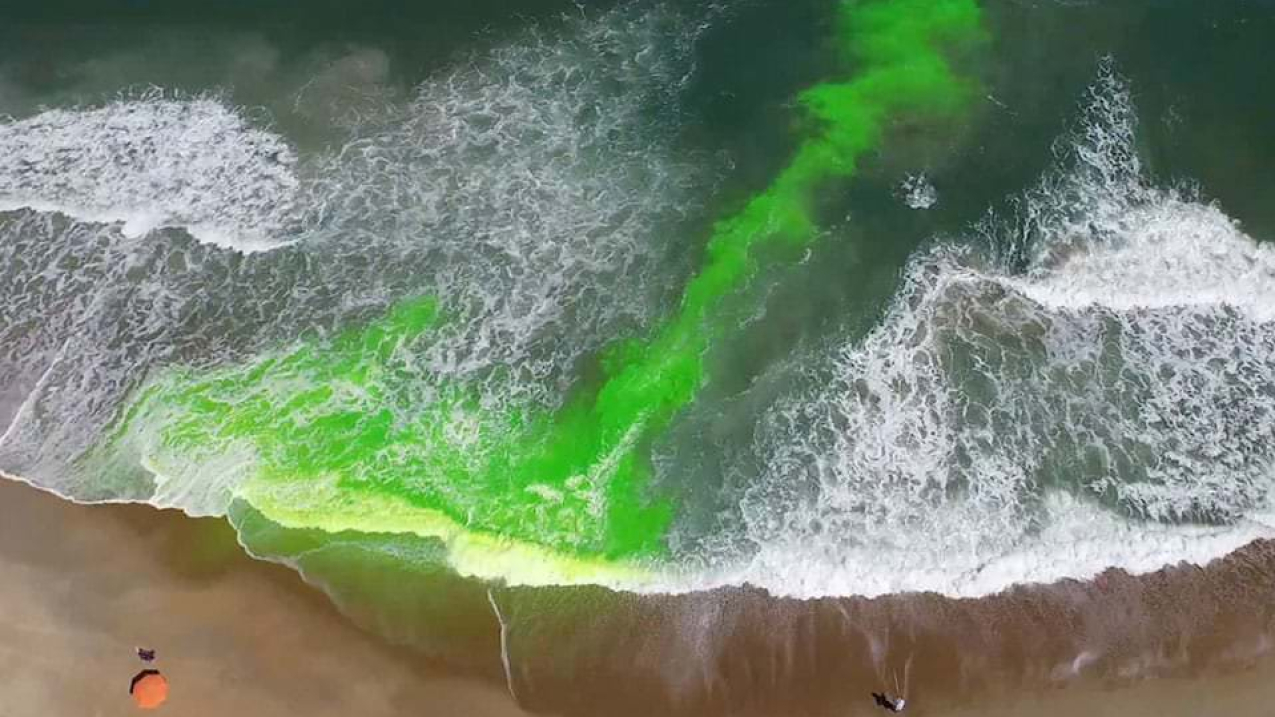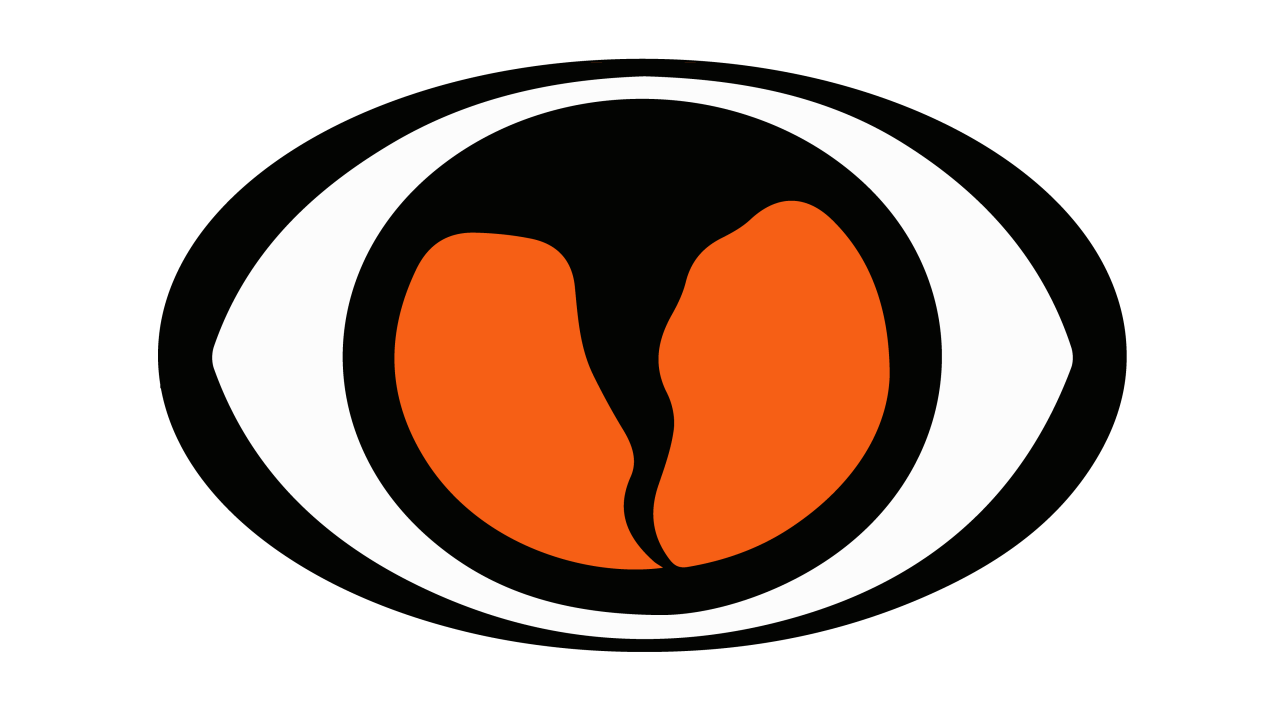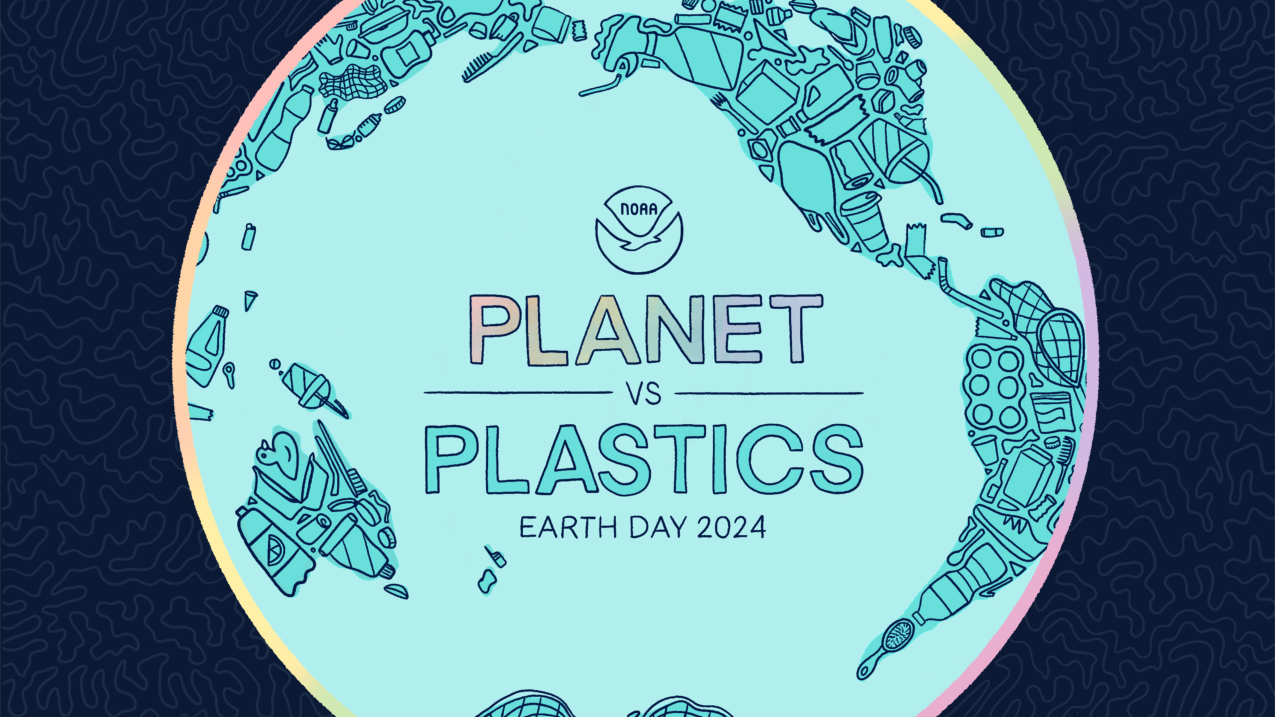#SpringIntoScience with NOAA
When it’s spring in the Northern Hemisphere, NOAA is here to celebrate! From articles to graphics to educational resources, S-P-R-I-N-G into science with us!
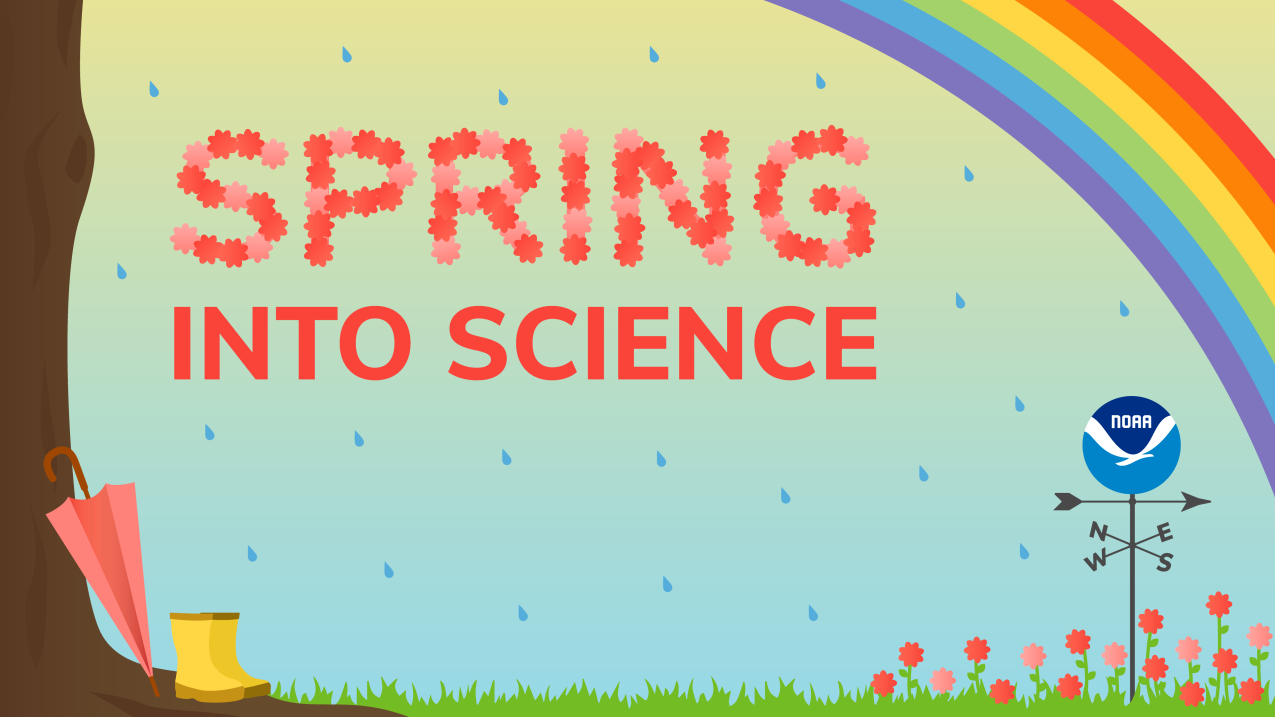
Changing seasons, changing science
From whale migration to phytoplankton blooms, how can you tell if spring has sprung in the sea?
The NOAA Hazardous Weather Testbed fosters collaboration for researchers and NWS forecasters to test and evaluate emerging technologies and science.
March 1 marks the start of meteorological spring, but astronomical spring doesn't start until March 19. What’s the difference between the two?
What does spring have in store?
Forecasters at predict above-average temperatures for most of the Continental U.S. and Alaska.
Leap Day has arrived and the U.S. Climate Normals have something to say about it.
Everyone's favorite groundhog predicted an early spring. Will Phil be right?
Check out the seasonal temperature and precipitation outlooks for the U.S. through March, April, and May.
During her children’s spring break, Nicole Fernandes and her family spent time exploring the diverse habitats along the central coast of California.
In this follow-up story, Nicole Fernandes details her family's adventure exploring NOAA’s mission along the north coast of California.
Severe weather and spring safety
Get ready for the change of seasons with safety tips, videos and infographics.
NOAA’s geostationary and polar-orbiting satellites monitor the changing weather patterns that come with the transition from winter to spring.
Are you #WeatherReady for Spring? Check out the latest weather safety graphics, videos, social media posts, and more from the National Weather Service.
As a volunteer storm spotter, you can help keep your local community safe by providing timely and accurate reports of severe weather to the National Weather Service. Consider signing up today!
What's a severe thunderstorm or tornado watch, and how is it different from a warning?
Celebrate Earth Day
How is NOAA addressing climate change, extreme weather, pollution and more? And how can you make a difference? Explore our Earth Day portal to find out!
Are you looking for a way to honor our planet this Earth Day, but not sure where to start? Take our Earth Day quiz to help spark some ideas that meet you where you are.
Show your love for the planet with coloring pages, posters, and graphics for Earth Day.



